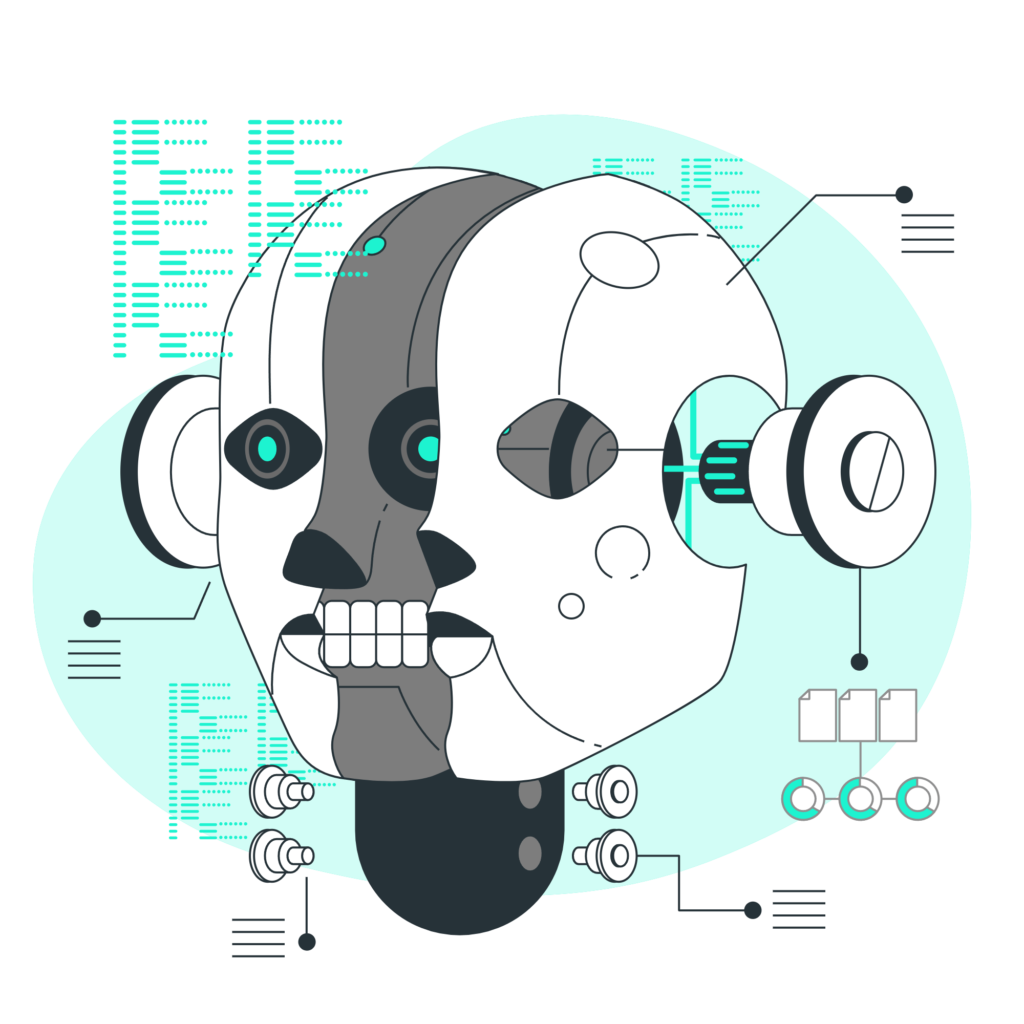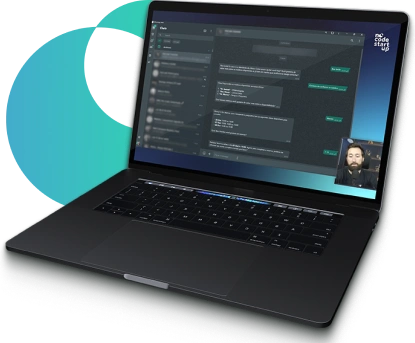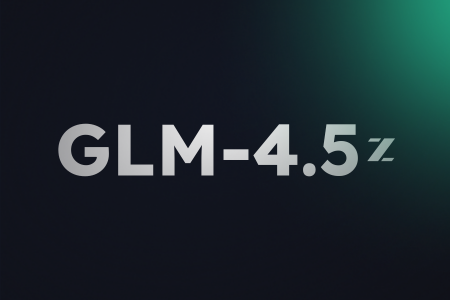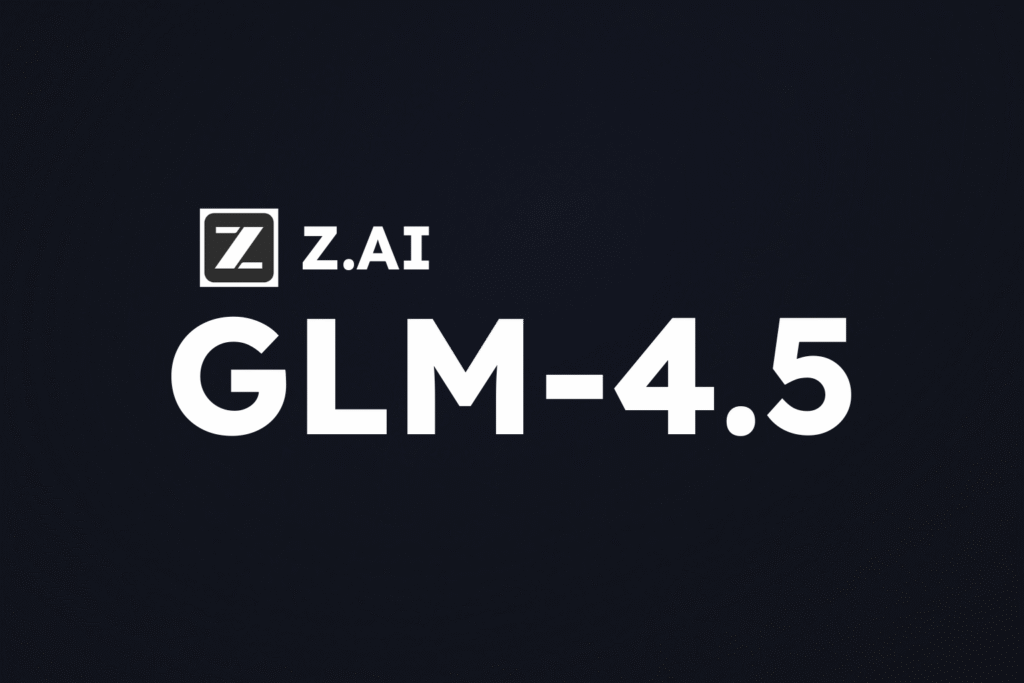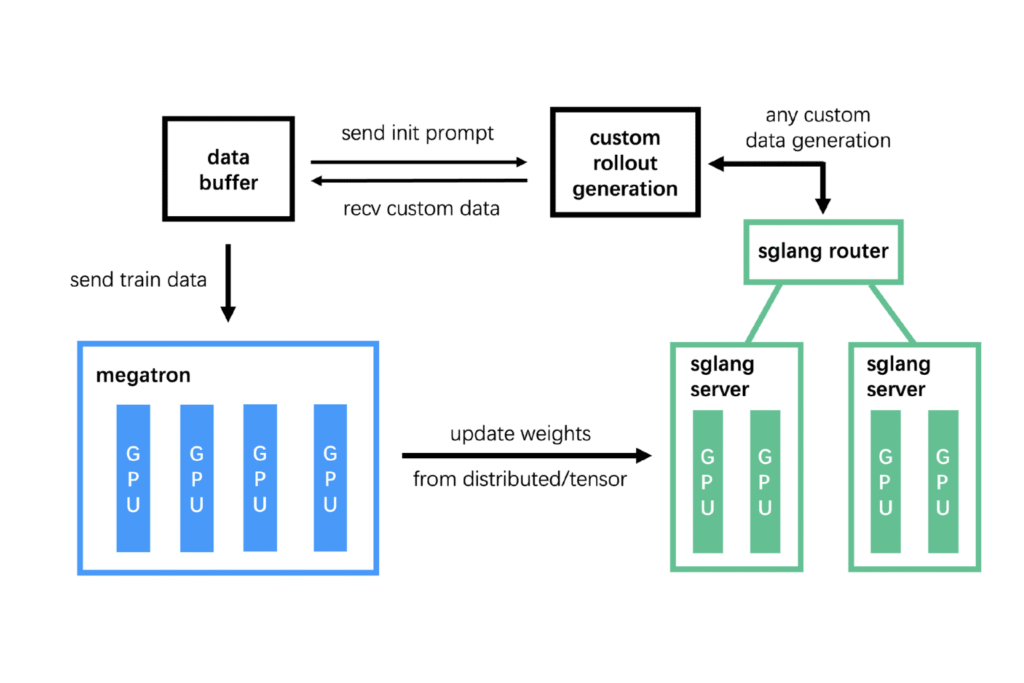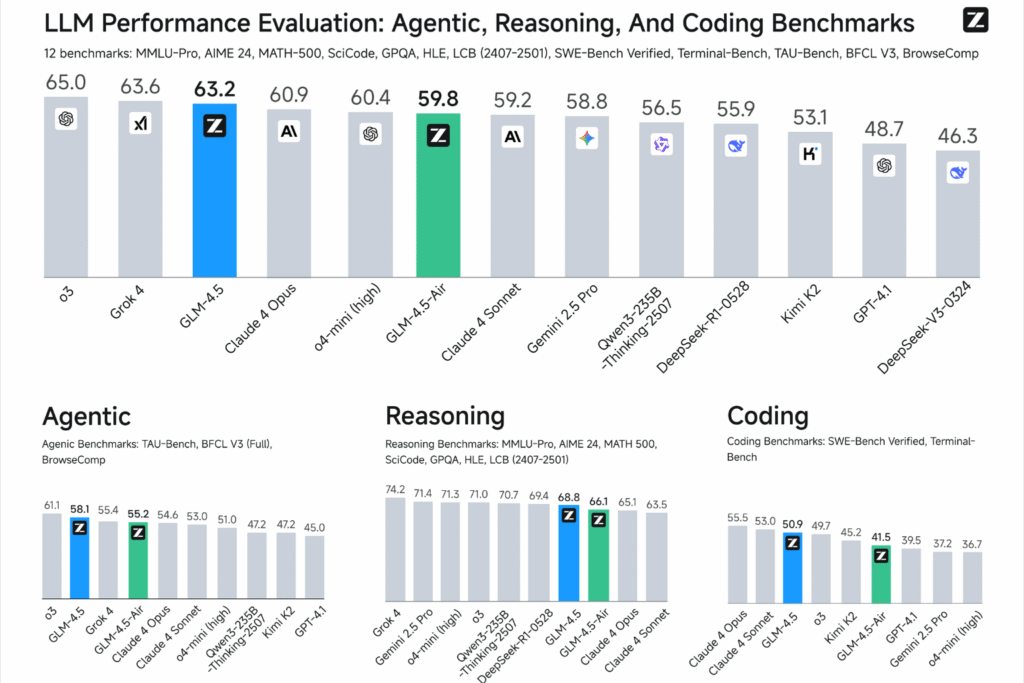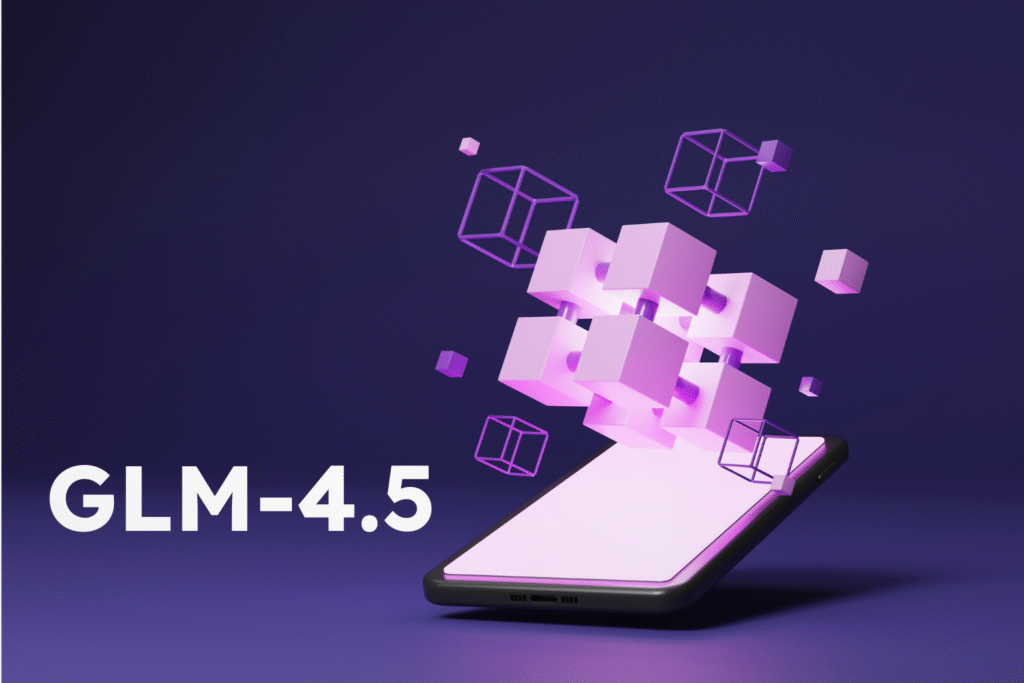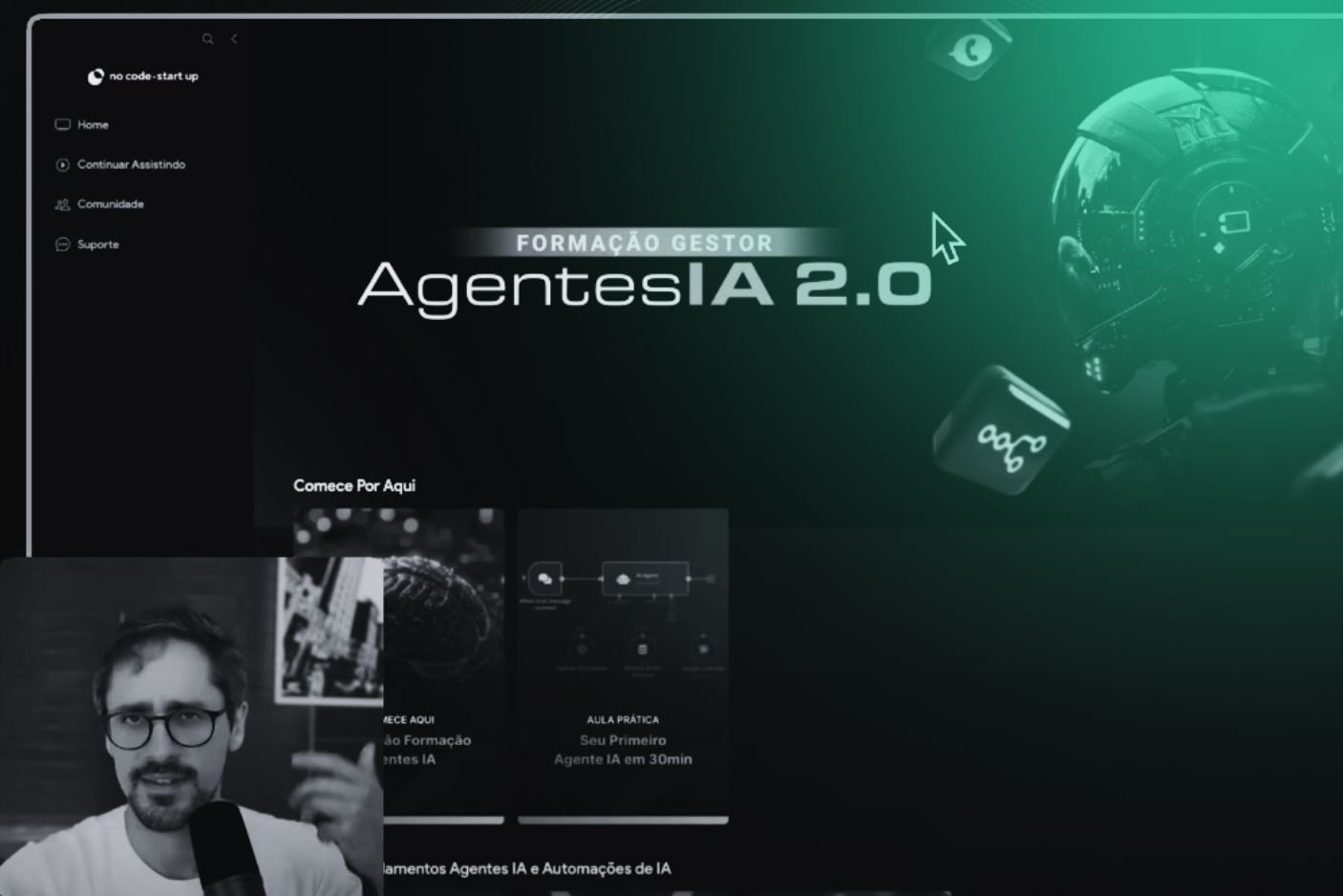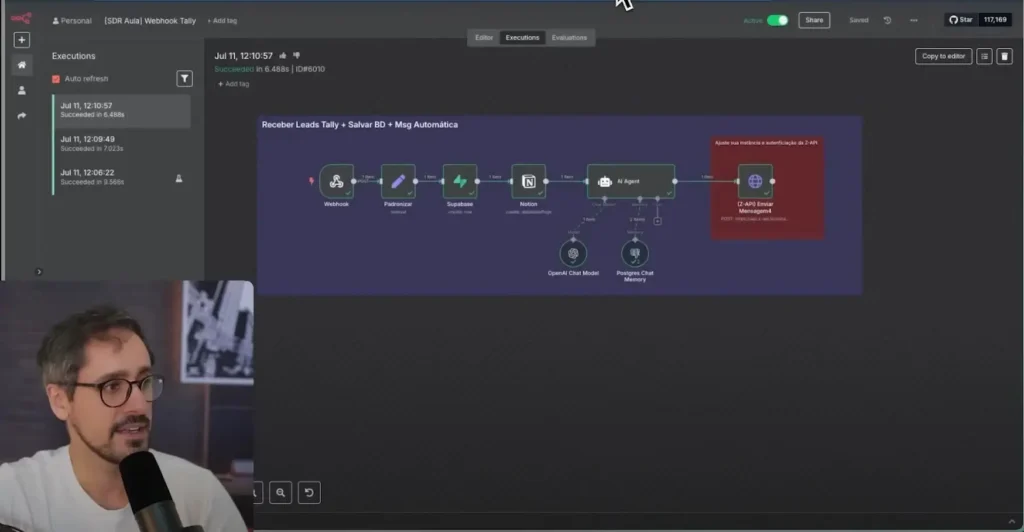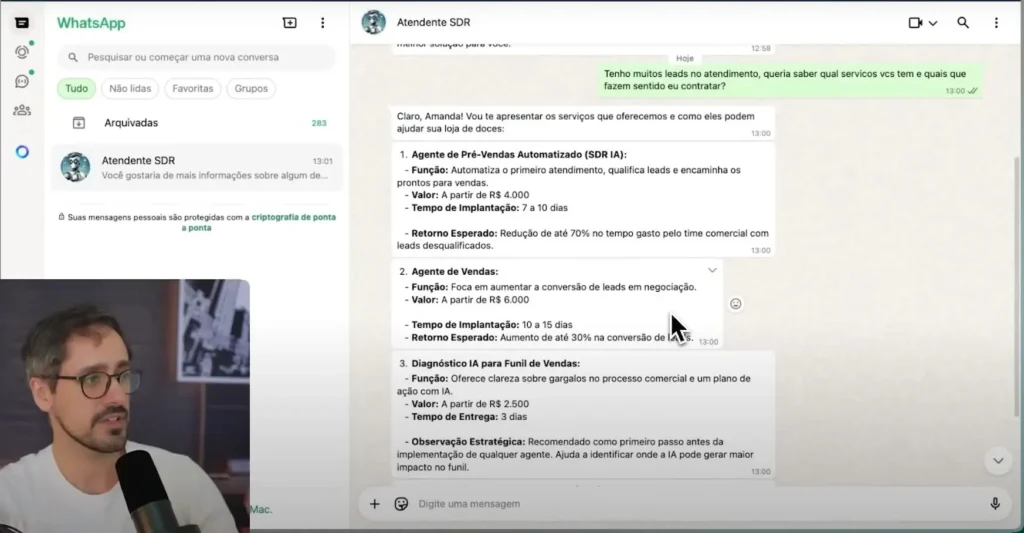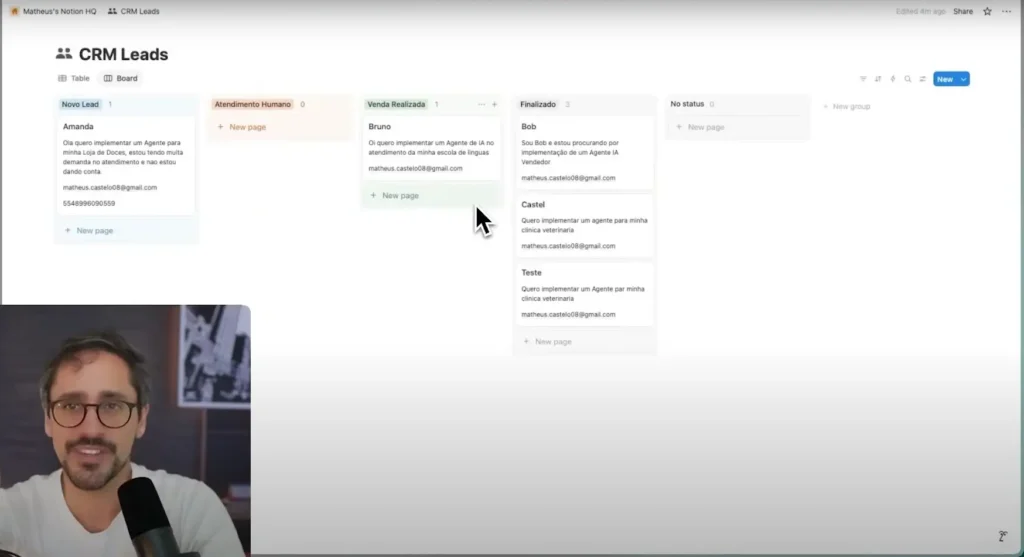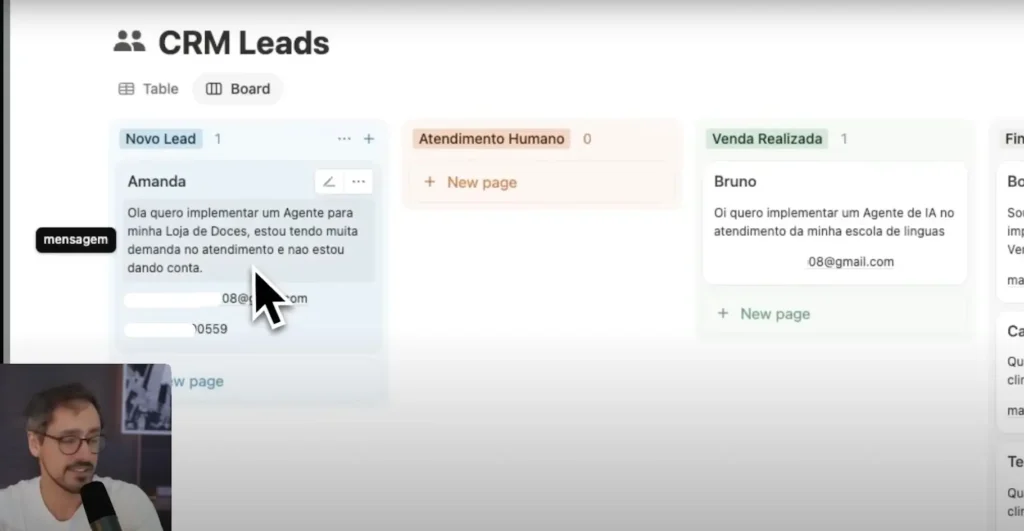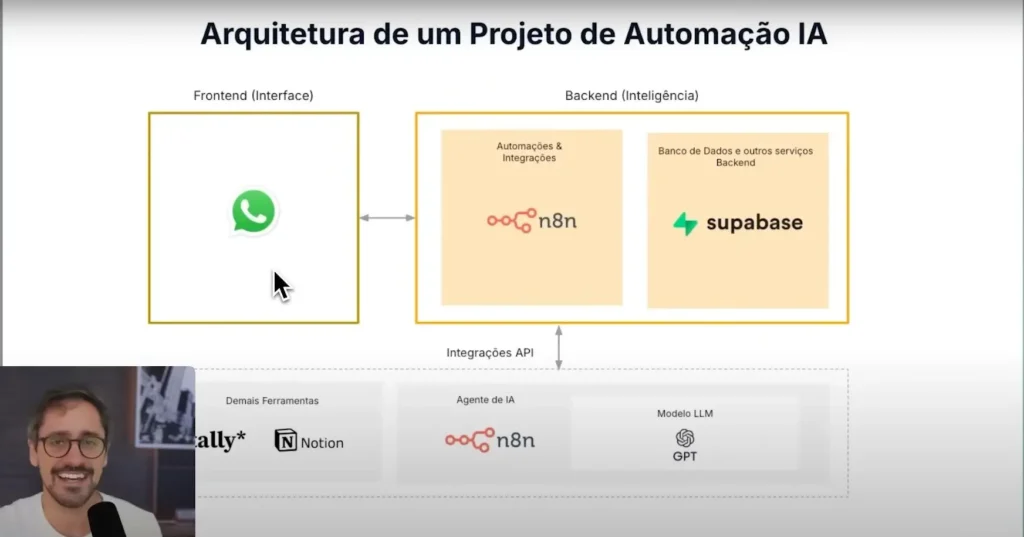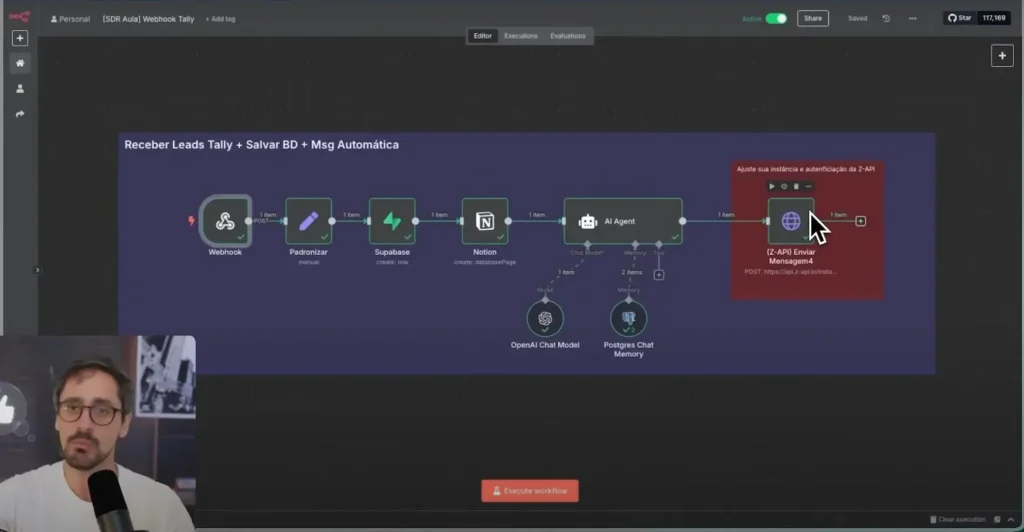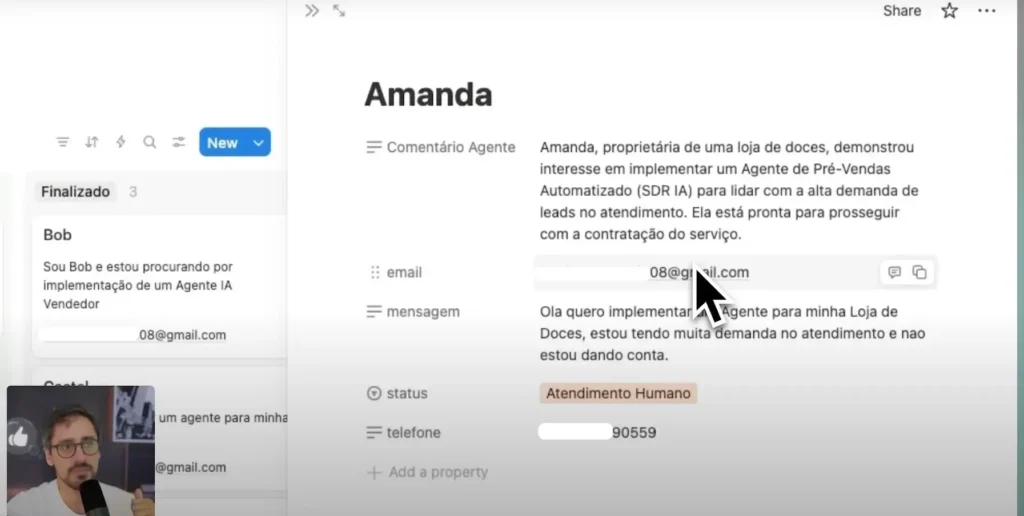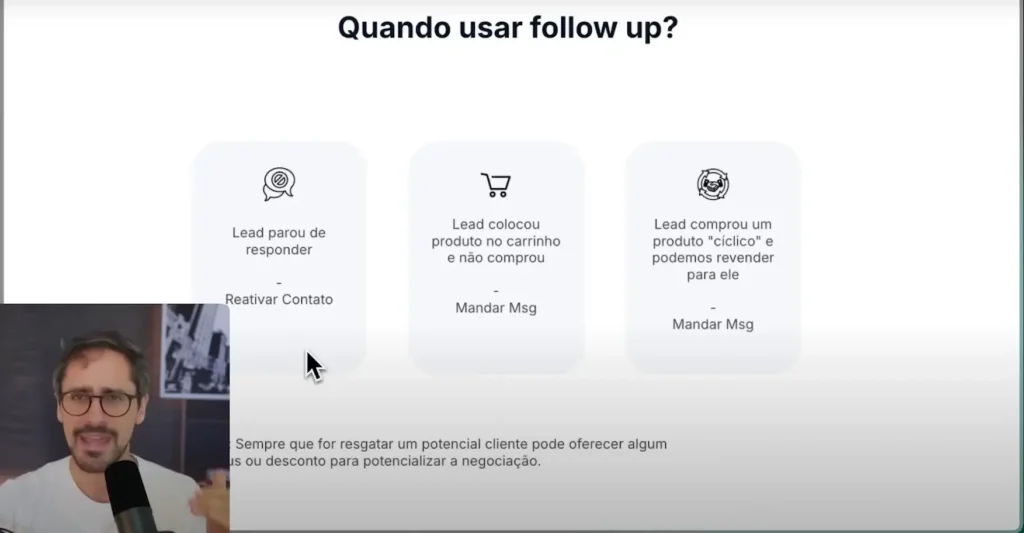O no-code já revolucionou o desenvolvimento ao permitir que qualquer pessoa crie aplicativos e automações sem escrever uma linha de código.
Em 2025, o casamento entre no-code e Inteligência Artificial ficou ainda mais poderoso: modelos como o GPT-4o geram texto, imagem e áudio em tempo real dentro da mesma conversa, acelerando ideação, prototipagem e até design de interface.
This means that freelancers podem validar serviços mais rápido, CEOs conseguem testar novas fontes de receita em dias e iniciantes respiram aliviados por não depender de sintaxe ou servidores complicados.
Ferramentas visuais (FlutterFlow, Bubble, n8n) agora integram APIs de IA em cliques, transformando tarefas manuais em fluxos automatizados.
Ao mesmo tempo, a IA evoluiu para reconhecer imagens, falar, raciocinar e resolver problemas com precisão antes inimaginável.
Platforms like Gemini 1.5 trazem dados em tempo real, integração a calendário e até geração de pequenos vídeos a partir de fotos, tudo dentro do smartphone ou smartwatch.
Como era de se esperar, já existem stacks que unem o melhor desses dois mundos e nelas você vai focar agora.
Se preferir ver tudo isso em vídeo, assista à nossa análise completa das “Melhores Ferramentas de IA para No-Code em 2025”.
Ficou curioso? Então descubra abaixo quais ferramentas de IA podem turbinar seus projetos no-code, sem que você precise virar um programador tradicional.
Table of Contents
What are the best AI tools for no-code?

There are several Artificial Intelligence tools that facilitate codeless development. But it is important to highlight that its use must be done with caution.
Remember that although AI systems are very advanced, they are still susceptible to failures. Therefore, we recommend a careful look and constant revisions during the process.
Dica rápida: use as sugestões de monetização logo após dominar cada ferramenta para recuperar o investimento em tempo recorde.
Now that you know that, let's get to the point? Discover some of the best generative Artificial Intelligence tools for no-code:
ChatGPT (Open AI)
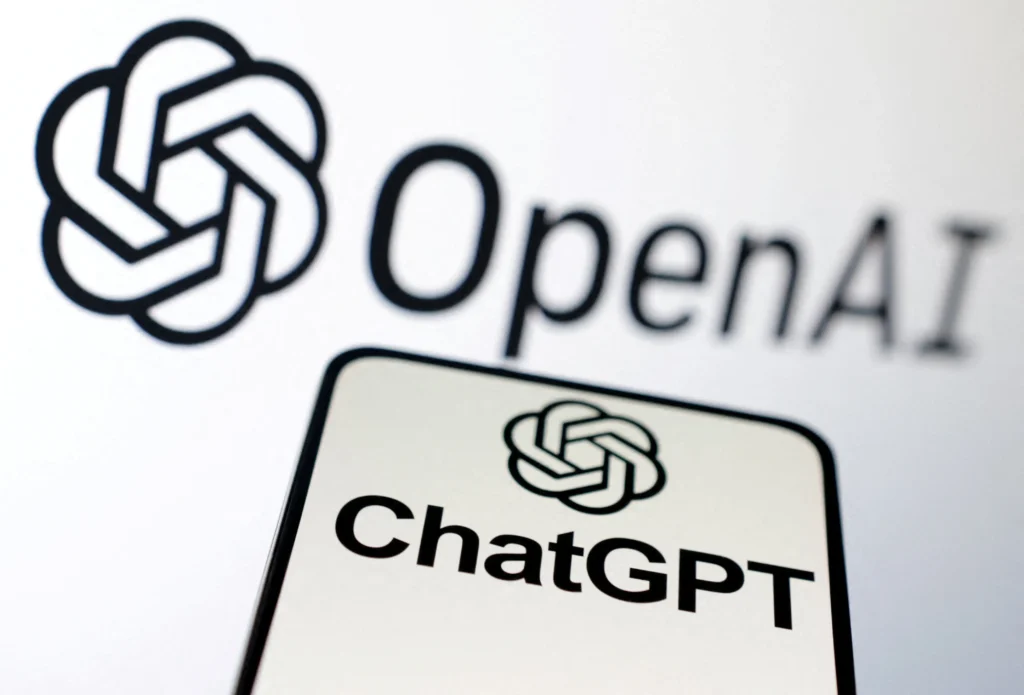
It is a language model developed by OpenAI, capable of generating texts, based on the context and previous conversations. You can use it to help build content.
O ChatGPT subiu de patamar com a chegada do GPT-4o, que reúne texto, visão e áudio em um único endpoint, com menor latência e custo. Além de produzir artigos, roteiros e e-mails, agora também gera wireframes em imagem que podem ser importados direto no Figma ou Bubble.
Imagine that ChatGPT is an ally to provide ideas and topics, suggest modifications to the text and even review grammar.
To make money with the help of the tool, you can offer services such as:
- Creation of content for social networks;
- Criação de conteúdo multimídia (texto + imagem) para marcas;
- Copywriting;
- Consultoria de negócios;
- Serviço de “UX draft” rápido: o cliente descreve a tela, você entrega o wireframe.
Gemini (Old Bard)
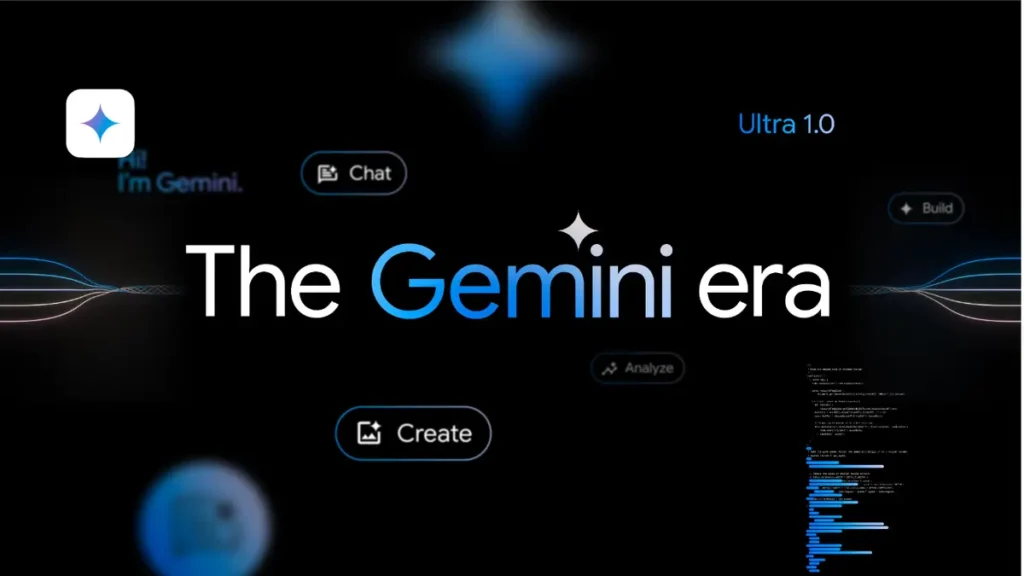
It is an experimental technology from Google that enables collaboration with generative AI. Bard is considered a great tool for brainstorm and accelerate productivity.
Seu grande diferencial é estar conectado às informações atualizadas da internet, diferente do ChatGPT, que apresenta dados somente até junho de 2024, para assuntos posteriores a essa data ele faz buscas em tempo real na web antes de responder.
O Gemini evoluiu para a versão 1.5 Ultra, trazendo conexão em tempo real com a web, recursos de planejamento de ações agendadas (ex.: enviar briefing diário por e-mail) e até geração de micro-vídeos de 8 s via Veo 3.
With Bard, you can generate texts for various purposes, such as creative writing, marketing, education, and entertainment. To earn money with the tool, you can incorporate it into providing services, such as:
- Creation and sale of original content;
- Text-based learning or entertainment solutions;
- Criação e monetização de aplicativos que usam o Bard como recurso;
- Planejamento de conteúdo data-driven para clientes (use a busca live);
- Micro-vídeos verticais automáticos para redes sociais;
- Aplicativos de produtividade que consomem a API do Gemini para resumos e alertas.
Dall-e (Open AI)

It is an AI system that can create realistic and artistic images from a natural language description. With it, it is possible create logos, comics, photorealistic scenes and much more.
O DALL-E 3 finalmente desenha texto legível dentro das imagens, perfeito para thumbnails, mockups de camisetas e slides.
Simply put, Dall-e is like an artist who will transform your words into images, using a large set of text-image data. To earn money with its help, you can offer services such as:
- Design gráfico e ilustração (logos, capas de e-book, mockups) com texto embutido;
- Animation and digital art;
- Edição ou manipulação de imagens;
- Packs de stickers ou NFTs temáticos;
- Plugins Bubble que geram ilustrações on-the-fly para e-commerce.
Leonardo AI
It is also a platform aimed at generating images, which allows create visual arts.
Its main difference compared to Dall-e is that it offers a greater variety of pre-trained or customized AI models, which can be adjusted according to user preferences.
Além dos modelos prontos, o Leonardo AI oferece fine-tuning visual: você treina um modelo com o estilo do cliente e gera centenas de variações em minutos. Há ainda API para devs e um modo colaborativo para equipes.
With Leonardo AI, you can explore different styles, genres and applications and thus join a community of more than 4 million creators. Check out some services that can be done with the tool to earn money:
- Creation and sale of visual assets for your projects;
- Image editing;
- Criação e monetização de aplicativos que usam o Leonardo AI como recurso;
- Kits de branding consistentes (ícones, ilustrações, texturas);
- Templates para marketplaces de design;
- SaaS que permite aos usuários criar o próprio modelo visual.
Eleven Labs
It is a very powerful free online tool, but it should be used with extreme caution. Allows create realistic AI voices, in any language, for various purposes, such as video, games, audiobooks and chatbots.
O ElevenLabs agora clona vozes em 29 idiomas; basta alguns segundos de áudio para o modo “Instant” ou 30 min para o “Professional”, com fidelidade quase total.
You can convert text to speech, clone your voice, find and share voices, and use advanced features like text-inserted projects and pauses. See some services that can be offered to earn money using the tool:
- Creation and sale of audio content;
- Dublagem ou mudança de voz;
- Narrar audiobooks, reels e anúncios locais em múltiplos idiomas;
- Dublagem de cursos online sem precisar contratar locutores;
- Serviço white-label de synthetic voice para agências.
HeyGen
It is a tool that turns text into videos with AI-generated avatars and voices. Pense nele como um produtor que vai te ajudar a criar vídeos de alta qualidade, com facilidade e rapidez.
O HeyGen renovou seus avatares para ficarem mais expressivos e adicionou algoritmos de renderização mais rápidos, ideais para vídeos corporativos ou tutoriais acelerados.
As oportunidades de ganhar dinheiro com o HeyGen incluem:
- Creation and sale of high quality videos;
- Video production or editing;
- Criação e monetização de aplicativos que usam o HeyGen como recurso;
- Produção de vídeos de onboarding para startups SaaS;
- Vídeos personalizados de prospecção B2B com avatar “falando” o nome do lead;
- Criação de conteúdos educativos em série para cursos gravados.
Voiceflow
It is the collaboration tool through which AI teams design, prototype, and launch conversational experiences.
That is, it is a chatbot and voice assistant developer that will help you create incredible conversational experiences for different platforms and customers.
O Voiceflow consolidou-se como hub visual para times de IA: você desenha fluxos, testa e publica agentes em WhatsApp, Web, Alexa ou Slack, tudo sem sair da plataforma.
To make money with Voiceflow, you can offer the following services:
- Development, integration or consultancy of chatbots and voice assistants;
- Training or teaching how to use Voiceflow to create conversational experiences;
- Creation and monetization of applications that use Voiceflow as a resource.
- Consultoria de chatbots de atendimento 24/7 para e-commerce.
- Mentoria: ensinar equipes de marketing a prototipar FAQ interativo.
- Integração de assistentes de voz em apps móveis no-code.
It is worth highlighting that it is possible to create and monetize applications that use all of these tools as resources. To do this, you need to understand how to do extra income online creating apps.
Advantages of AI for No-Code Developers
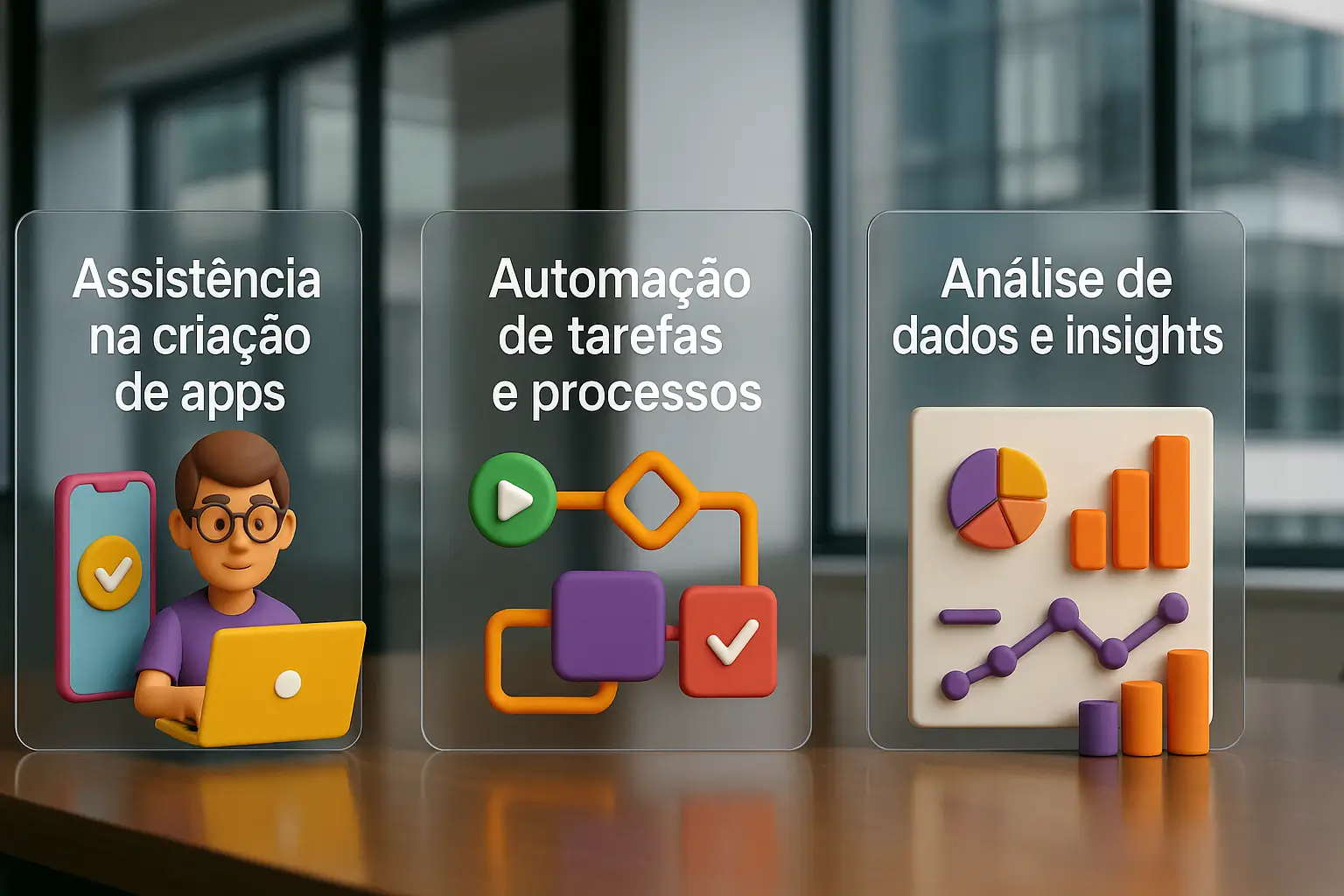
Now that you know the main Artificial Intelligence tools, you may be wondering what advantages they can bring to your work? In this topic, we will show the benefits of using AI:
Time saving
One of the main advantages of using Artificial Intelligence is save a lot of time. You can create projects in minutes or, at most, hours instead of days or weeks.
With AI, you don't have to worry about syntax, bugs, testing, and code maintenance. You can fully focus on your idea and put it into practice quickly.
Quality improvement and error reduction
Another advantage is that Artificial Intelligence makes it easier for the developer to achieve a higher quality in your work.
Think about it, with AI, you can count on the help of the machine, which learns from the data and constantly improves itself. That way, we avoid human errors, inconsistencies and failures.
Increased productivity
Without a doubt, with AI it is possible create more, in less time and this is an excellent advantage when we talk about productivity.
This is because you can also automate processes without knowing programming, such as data collection, cleaning and analysis. Furthermore, it is possible scale your project easily, without needing more resources.
Innovation opportunities
Artificial Intelligence also can open up new opportunities for innovation. With it, it is possible to combine different tools, data and resources to create unique and original projects.
With the time you'll save without having to worry about coding, it's easier to solve complex and challenging problems.
Makes learning easier
Another advantage of Artificial Intelligence is that it can make learning easier. Imagine that you are taking a programming course and need to learn how to create lines of code, but you don’t even know where to start.
With AI, It is possible to see, in practice, how the machine works and solves problems.
Be a developer with No-Code Start-Up!
Now that you know the best Artificial Intelligence tools, how about becoming a no-code application developer?
With the Flutterflow course, you learn how to create incredible applications using just your creativity and the Flutter platform, the most popular mobile development framework in the world.
Best of all, the course is 100% free. Do not miss this opportunity. Be a developer, take the free Flutterflow course!
Comparativo Ferramentas de IA No‑Code (2025)
| Ferramenta ▼ | Qualidade | Preço (R$) | Velocidade | Customização | Destaque 2025 |
|---|---|---|---|---|---|
| GPT‑4o | ★ | R$ 111,33/mês (ChatGPT Plus) | ★ | – | Multimodal texto‑imagem‑áudio com baixa latência |
| Gemini 2.5 (Pro / Flash) | ★ | R$ 96,99/mês (Gemini Advanced) | ★ | – | Janela de 1 M tokens com ótimo custo‑benefício |
| DALL‑E 3 | ★ | R$ 0,22 por imagem (sem assinatura) | – | – | Melhor renderização de texto dentro da imagem |
| Leonardo AI (Phoenix) | ★ | R$ 27.75/mês (Professional) | – | ★ | Fine‑tuning visual rápido para fotorealismo em lote |
| ElevenLabs | ★ | R$ 27,84/mês (Starter) | ★ | ★ | Clonagem de voz natural em 29 idiomas (~75 ms de latência) |
| HeyGen | – | R$ 161,45/mês (Creator) | ★ | – | Criação de vídeo expressa com 100+ avatares |
| Voiceflow | – | R$ 333,92/mês (Pro) | – | ★ | Hub visual para chatbots com integração Zendesk e RAG |
Insights rápidos
- GPT‑4o lidera em coerência multimodal, mas Gemini 2.5 oferece melhor custo para projetos intensivos em tokens.
- DALL‑E 3 domina em arte com texto legível; já Leonardo AI acelera a criação de visuais customizados em larga escala.
- ElevenLabs continua referência em voz natural multilíngue, essencial para reels e dublagens.
- HeyGen é a rota mais rápida para vídeos‑avatar; Voiceflow destaca‑se como hub low‑code para chatbots omnichannel.
